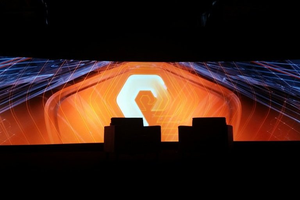Pure Storage Posts Strong Q4 Numbers Post IPO
All flash storage maker Pure Storage has posted strong financial figures in its first earnings report post-IPO, for the fourth quarter of fiscal 2016, which ended on 31 January 2016.
The company was keen to point out that the non-GAAP free cash flow for the quarter was positive for the first time, at $32.1 million. CEO Scott Dietzen said in a blog that the company now expects “to reach cash flow break-even on a sustained basis in the second half of 2017″ which is ahead of previous guidance that cash-flow break even would not be reached until 2018.
While the company emphasized non-GAAP results such as Gross Margin of 66% for the quarter, the GAAP figures are similarly strong, with both product and support gross margins improved (product up from 58.3% to 68.2%, and support up from 33.0% to 49.5%) and operating margin improved from -69.9% to -28.6%, compared to Q4 of fiscal 2015.
Pure cites a strong ‘secular trend' (please tell me what the religious trends are) towards flash, and thumbs its nose at ‘traditional' vendors. “Loading SSDs into twenty year old designs crafted for mechanical disk and for traditional, services intensive IT cannot deliver on the promise of flash and cloud,” says Dietzen.
With every storage vendor adding an all-flash array to its product portfolio, it seems clear that all-flash is indeed of major interest to customers. With the price per GB dropping rapidly, combined with data reduction techniques often not found in traditional spinning disk arrays, the cost barrier for customers to adopt flash to the exclusion of fast disk is going away.
Many industry watchers, myself included, have been surprised at how fast flash has become a viable option for the de-facto location for primary storage. The price/performance trade-off is rapidly favoring all-flash over a hybrid arrangement for simplicity of management and predictable performance.
I have long railed against using data reduction figures as the justification for comparing $/GB with disk systems, but vendors aren't adding the same techniques to disk-based systems, which makes the point rather moot. The sheer performance, and predictability, of flash is so significantly better than spinning disk that it's often not worth the hassle. I can see a day in the near future (and much closer than I thought only twelve months ago) where flash simply replaces 15k RPM disk as the only sensible primary storage tier.
The advent of dense flash techniques like 3D NAND will only continue to drive the price of flash down, and if newer products such as 3D Xpoint do indeed create a new tier above NAND flash in price/performance, that will only put greater pressure onto NAND flash.
The trend is clear: existing primary storage on disk systems will move to flash, and new primary workloads will increasingly start out on flash. We haven't quite reached the crossover point, but it's not far away. The market potential for Pure Storage looks good, and management has so far shown the required discipline require to capitalize on the trend while moving towards profitability.
Now if only we could convince other tech companies that turning a profit is a good thing worth aiming for.
This article first appeared in Forbes.com here.


